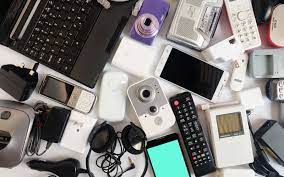 Tech user experiences are deteriorating at a rapid rate – for all. If you have encountered any of the following, you know. The absurdity of two-factor authentication within a single device, long complex passwords, five years of remembered password history to prevent re-use. And that’s before you have logged into a site that could simply be a news media or site or Gmail that just wants to display insulting and absurd ads now that you have been ‘authenticated’. Or you can examine the behavior of the same software applications across multiple devices. You may have noticed that scam innovation is beginning to outpace the product development cycles in other categories – (although some scammers seem able to be scammed themselves).
Tech user experiences are deteriorating at a rapid rate – for all. If you have encountered any of the following, you know. The absurdity of two-factor authentication within a single device, long complex passwords, five years of remembered password history to prevent re-use. And that’s before you have logged into a site that could simply be a news media or site or Gmail that just wants to display insulting and absurd ads now that you have been ‘authenticated’. Or you can examine the behavior of the same software applications across multiple devices. You may have noticed that scam innovation is beginning to outpace the product development cycles in other categories – (although some scammers seem able to be scammed themselves).
And did we mention health care sites? My Chart, myself. All I want is the result of blood test, presented in an explainable way, not just “HIGH”. It’s nice to know that there is a “Patient Experience” Manager at an outpatient clinic, not so nice to encounter an increasingly present kiosk (versus a person) requiring multiple ID cards and inputs, before you can sit down and wait to see a practitioner. Perhaps the industry is convinced that this will make the patient check-in experience easier (for them) and more efficient, but it is another hostile barrier for the line-up of elderly patients waiting to be seen. This is also noted in the fast food industry – implying you are not welcome here if you can’t use this technology. And did we mention the QR coded menu trend, even in sit-down restaurants? Restaurants (and their tech providers) love them.
Clearly the various industry providers believe that all will get used to it. This is particularly obnoxious at a concert where the program could be accessed by a QR code on your phone, but then you are told to turn off your phones when the program begins. And the mostly-older audience at a matinee is flummoxed by the lack of printed programs. Saving money? Alienating the audience? Convenient? Attaching a QR code to the arm rest? Does the audience have a choice? All of these have a belief that their audience, customers, and patients are ready for the disappearance of people and print to help them get what they need. But the audience can always stay home.
Imagine an AI-enabled future for each of these. Will AI help us with our individual tech user experience? Ask ChatGPT 4 (after you log in of course) how best to produce or manage passwords – the 7 steps offer useful advice. Now consider a future in which you ask for the best way to do just about anything, including triage of the symptoms of your own health status. Now that you have logged in, you can save the answer before heading off to urgent care if it wasn’t helpful. But what if it remembered the question for next time, saved in a profile about you, not taken from another site, but willingly provided by you to improve responses. “I see you have asked about a stiff knee before, would you like to see some exercises that possibly could be helpful? Next time, “How were those exercises? And would you like some other suggestions?”
[This post is part of the research about "The Future of The Tech User Experience" to be published in June 2024.]
See updated Market Overview Technology for Aging 2024 report, published in January

 Tech user experiences are deteriorating at a rapid rate – for all. If you have encountered any of the following, you know. The
Tech user experiences are deteriorating at a rapid rate – for all. If you have encountered any of the following, you know. The